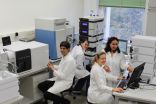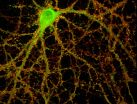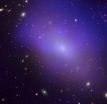(Press-News.org) Boulder, CO, USA — Washington's coast is so close to the seismically active Cascadia Subduction Zone that if a megathrust earthquake were to occur, a tsunami would hit the Washington shoreline in just 25 minutes.
One coastal community is preparing for such a disaster by starting construction on the nation's first tsunami evacuation refuge, large enough to shelter more than 1,000 people who are within 20-minute walking distance.
The vertical evacuation-refuge will be the roof of the gym of the new school in Grays Harbor County, Washington. The Ocosta Elementary School and Tsunami Safe Haven will be the first of its kind in the nation and will be the culmination of 18 years of effort, said Tim Walsh, who is a Chief Hazard Geologist at the Department of Natural Resources and has been working on this project since The National Tsunami Hazard Mitigation Program was formed in 1995.
Walsh will present the project design for the school and structure, along with the detailed tsunami modeling used to find the best location for the refuge, at the Annual Meeting for the Geological Society of America in Vancouver, Canada, on 21 October.
The Cascadia subduction zone is a 700-mile-long (over 1,000 kilometers) fault along the West Coast, where the Juan de Fuca Plate is being forced under the North American Plate. The subduction zone is capable of producing massive earthquakes; scientists have calculated that magnitude-9 earthquakes along this fault line could generate a massive tsunami that would hit the coastlines of British Columbia, Washington, Oregon, and California within 20 to 30 minutes.
"It used to be thought that Cascadia was not an active fault," said Walsh. Not only has Cascadia been found to be an active fault, it has a 10 percent chance that it will cause an earthquake in the next 50 years, he said.
"It is more than 10 times more likely than the chance you will be killed in a traffic accident," said Walsh. "But you aren't looking at the statistics of a single person, but an earthquake that would have an effect on thousands of miles of shoreline."
The biggest challenge was at the very beginning, trying to come up with a location that could be effective and accessible to people, said Walsh. "It was difficult in the beginning to go to the public meetings in these communities and present the hazards, but have no solution for them," he said.
Project Safe Haven brought together structural engineers, oceanographers, geographers, and scientists from many other disciplines to create a safe and accessible refuge.
Walsh and his colleagues used a model called GeoClaw to research the risk a tsunami, factoring in and any potential landslides caused by the wave or megaquake. Using this model in the community for Grays Harbor County, the scientists determined the best place for the school, and what how much force the structure would have to withstand to protect refugees.
The school will be built on a dune ridge, so the roof of the evacuation shelter will be about 55 feet (almost 17 meters) above sea-level. The structure is designed to withstand earthquakes and the impact of a storm surge, with reinforced concrete cores at each corner of the gym and staircases leading to the room. The school, and refuge, is expected to be finished and operating for the 2015-2016 academic year.
Walsh would like to see other scientists and community groups working together to create novel solutions for tsunami risk, he said. Currently the Washington coast has very few tall buildings, and barely any are taller than three stories, leaving thousands of people at risk in the event of a tsunami, he said.
INFORMATION:
Release No. 14-78: http://www.geosociety.org/news/pr/2014/14-78.htm
Contact: Christa Stratton
+1-778-331-7625 during the meeting, 19-22 Oct. 2014
+1-303-357-1093 after the meeting
cstratton@geosociety.org
WHAT:
THE FIRST TSUNAMI VERTICAL EVACUATION STRUCTURE IN THE UNITED STATES: OCOSTA ELEMENTARY SCHOOL, WASHINGTON
Abstract: https://gsa.confex.com/gsa/2014AM/webprogram/Paper247190.html
Session No. 231—Booth 397
T7. Great Earthquakes, the Cascadia Subduction Zone, and Society (Posters)
WHO:
Timothy J. Walsh, Division of Geology and Earth Resources, Washington Department of Natural Resources
WHEN & WHERE:
Tuesday, 21 October 2014: 9:00 to 11:00 AM, and 5:00 to 6:30 PM
Vancouver Convention Centre-West Exhibition Hall C
The Geological Society of America, founded in 1888, is a scientific society with more than 26,500 members from academia, government, and industry in more than 100 countries. Through its meetings, publications, and programs, GSA enhances the professional growth of its members and promotes the geosciences in the service of humankind. Headquartered in Boulder, Colorado, GSA encourages cooperative research among earth, life, planetary, and social scientists, fosters public dialogue on geoscience issues, and supports all levels of earth science education.
They may be tiny and stingless but there's nothing sweet and innocent about a species of native Sugarbag bee when it goes to war over a coveted honey-filled hive.
A study by behavioural ecologist Dr Paul Cunningham, from QUT, and molecular biologist Dr James Hereward, from the University of Queensland, published in American Naturalist, found the bees' used their jaws as lethal weapons when they zoomed in on a neighbouring Brisbane hive to boot out the inhabitants and install their own queen to rule.
Dr Cunningham said the attacking bees arrived in a swarm and clashed ...
This news release is available in German. Stroma cells are derived from connective tissue and may critically influence tumour growth. This knowledge is not new. However, bioanalyst Christopher Gerner and an interdisciplinary team from the University of Vienna and the Medical University of Vienna have developed a novel methodology for investigation. Using modern mass spectrometry, tumour-promoting activities from breast fibroblasts were directly determined from needle biopsy samples. Recently this experimental break-through is published in the renowned Journal of Proteome ...
Folsom, Calif., (October 21, 2014) – A new animal study published in the Journal of Alzheimer's Disease indicates that a diet including walnuts may have a beneficial effect in reducing the risk, delaying the onset, slowing the progression of, or preventing Alzheimer's disease.
Research led by Abha Chauhan, PhD, head of the Developmental Neuroscience Laboratory at the New York State Institute for Basic Research in Developmental Disabilities (IBR), found significant improvement in learning skills, memory, reducing anxiety, and motor development in mice fed a walnut-enriched ...
When it comes to the brain, "more is better" seems like an obvious assumption. But in the case of synapses, which are the connections between brain cells, too many or too few can both disrupt brain function.
Researchers from Princeton University and the University of California-San Diego (UCSD) recently found that an immune-system protein called MHCI, or major histocompatibility complex class I, moonlights in the nervous system to help regulate the number of synapses, which transmit chemical and electrical signals between neurons. The researchers report in the Journal ...
Massive black holes spewing out radio-frequency-emitting particles at near-light speed can block formation of new stars in aging galaxies, a study has found.
The research provides crucial new evidence that it is these jets of "radio-frequency feedback" streaming from mature galaxies' central black holes that prevent hot free gas from cooling and collapsing into baby stars.
"When you look into the past history of the universe, you see these galaxies building stars," said Tobias Marriage, assistant professor of physics and astronomy at Johns Hopkins and co-lead author ...
A new medical imaging method being developed at Rutgers University could help physicians detect cancer and other diseases earlier than before, speeding treatment and reducing the need for invasive, time-consuming biopsies.
The potentially lifesaving technique uses nanotechnology to reveal small cancerous tumors and cardiovascular lesions deep inside the body. It is showing promise in early tests by Rutgers researchers in the schools of engineering and pharmacy.
The Rutgers scientists, who published initial results of their work in the July issue of the journal Nature ...
Undescended testis is commonly found in newborn boys and usually normalizes spontaneously by the age of six months. In one in a hundred boys, however, at least one testis remains undescended—a condition associated with impaired fertility and a higher risk of testicular cancer in later life. About 3500 boys are affected with this condition in Germany each year. In the currently valid medical guideline for the treatment of undescended testis, early surgery is recommended, i.e., orchidopexy before the child's first birthday, in order to prevent late sequelae. Nonetheless, ...
LAWRENCE — Whiplash the Cowboy Monkey. Grumpy Cat. "Peanut," the Ugliest Dog in the World. These might be a sampling of the most familiar animals to millions of users of social networking sites like Facebook.
But one doctoral student in geography at the University of Kansas recognizes social networking sites as a potential boon for scientifically documenting Earth's biodiversity, particularly in developing nations. In fact, for this idea, Vijay Barve was just honored with a Young Researchers Award from the Global Biodiversity Information Facility, an international ...
CAMBRIDGE, Mass--The boom in oil and gas produced through hydraulic fracturing, or fracking, is seen as a boon for meeting U.S. energy needs. But one byproduct of the process is millions of gallons of water that's much saltier than seawater, after leaching salts from rocks deep below the surface.
Now researchers at MIT and in Saudi Arabia say they have found an economical solution for removing the salt from this water. The new analysis appears this week in the journal Applied Energy, in a paper co-authored by MIT professor John Lienhard, postdoc Ronan McGovern, and four ...
This news release is available in German. Conventional magnetic resonance imaging (MRI), well-known from its use in hospitals, can typically resolve details of up to one tenth of a millimetre, for example in cross-sectional images of the human body. Together with colleagues at the University of Leipzig, researchers of ETH Zurich are working on massively increasing the resolution of the technique, with the goal of eventually imaging at the level of single molecules – demanding an over one million times finer resolution. By detecting the signal from a single hydrogen ...


